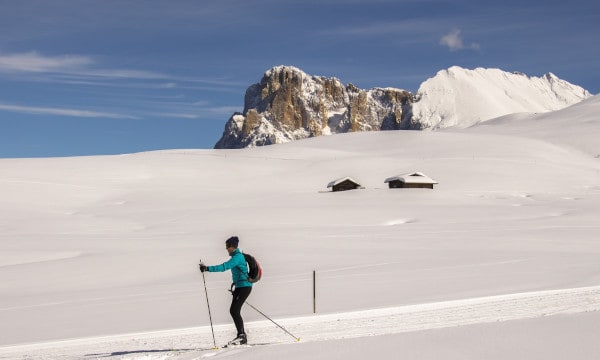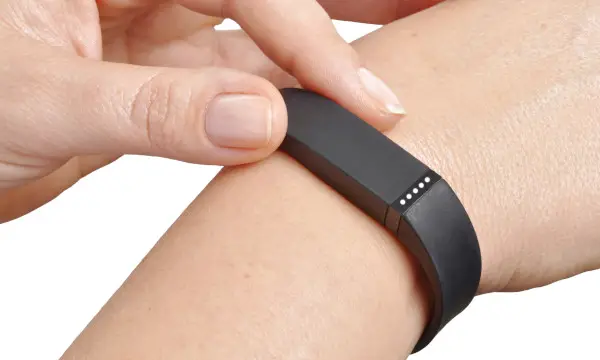Table of Contents
Going downhill during XC skiing can be a daunting task for strong or intermediate Nordic skiers as well as beginners.
Even the experienced Alpine skiers get perplexed with the difficulty level of Nordic downhill skiing, as they find it hard to transfer their skills to cross-country skiing, which involves slower speeds during downhill – a factor that a lot of novice skiers like about cross-country skiing, as they would rather not encounter any speed demons.
4 Techniques to Control Speed and Stop
Skiers can use 4 core techniques either as standalone or collectively in combination to stop on their cross-country skis, depending on the type of maneuvers they are making. The decisions will hinge on whether you are looking to stop completely, minimize or control speed or increase it, and also if the trail is aligned straight or of a turning type.
Eventually, the idea is to learn all these techniques so you can give yourself some confidence of making downhill maneuvers with safety.

1. Snowplow
This is a must-have and a very effective braking technique for all cross-country skiers, and is something that you learn at inception of your cross-country skiing training, generally with the assistance of an experiences instructor.
You can practice it yourself too by spotting a broad downhill trail. Make sure your skis are in V-shape and are not touching or crossing over each other. You then need to bend your legs slightly allowing the skier to press the inner edges of ski into snow. You need to be clear where you are aiming to reach and not be distracted by what is happening around you or who is watching you. Focus on the target where you intend to stop and your upper body should face that direction.
Now you can start to glide and keep adjusting your angle by opening or closing the angle slightly as required. This simple movement will help you immensely in easily learning the trick of controlling speed.
If you need to make a turn, then all you need to do is to shift your body weight towards outer ski and you will notice a swerve and curve in the intended direction.
You can then switch sides and get a feel of which side you are more confident and comfortable with. However, you need to practice on both the sides.
The above steps can be repeated as many times as you like until you perfect it.
This is the safest maneuver for beginners to keep a check on their pace – slow, super slow and halt. These are important checks for a downhill motion when you meet an obstacle out of nowhere or other skiers for example.
2. Parallel Skidding
Turns can be used effectively and efficiently in two ways when cross-country skiing at a good speed: the step-turn (see the next section below) and the skid-turn.
The skid-turn is akin to a downhill turn, as both skis are kept parallel and on edge and then carved around a corner. It is employed generally to scrub speed when required and provides more effective control as compared to a step-turn, but with more braking effect.
In cross-country skiing, it all depends on which skid angle you opt for, and that will dictate how fast or slow you glide on the snow. This is an amazingly effective speed management technique and requires tons of practice for you to be able to use it in all ranges.
3. Step Turns
Step turns are used by advanced skiers who have ample control over their speed whilst in racing positions. If you do not have brake techniques, you will build up a lot of speed and that is only natural and extremely risky, particularly on curvy and turning trails. In this situation, you need to know how to step off track during gliding at a fast pace – requiring utmost confidence and repetitive practice.
Step turns are used by professional skiers to push along the arc of the turn, by making smaller and faster sideway steps. This is not a braking technique by any means and the skis are kept in a V-shape. This technique is meant for those intending to make fast turns. Also, this is the maneuver or point when most of the skiers meet with an accident or fall during the race.
This turn requires stepping with the help of inside ski, and subsequently by outside ski, on a back to back basis, around the turn. It is a very fast way of cornering, but doesn’t provide you with much control as you try to keep on a flatter ski. The step-turn can be super effective in sharp or steep corners, but not so much in case of extreme corners (which will need skid-turn).
In racing scenarios, it is challenging to skid within very sharp corners, and then subsequently step-turning out of them – optimizing pace and control. Try using the full corner if it is safe to do so, whilst turning, similar to how race car drivers do. You cut from the outer space or track and then getting closer to the middle of the turn, eventually ending up outside again. This is basically helping the skier to reduce the angles for turning purposes, in a stable and secure manner.
4. Tuck
Tucks are meant to be the simplest and paciest downhill technique. The lower the tuck the faster you go. If you are tired with all the bending and standing, then high tucks can be a good solution to give you a break and maintain pace. You should use tucks on track-set turns (classic style) and straight runs.
Do not try to tuck the poles under your side arms when going downhill. This can be a dangerous maneuver as you point the tips of ski upward (rather than downward), and may end up hurting or poking someone behind or around you.
Always keep an eye out for fellow skiers around you, particularly those approaching you’re your back, prior to making any sudden side maneuvers across the trail whilst tucked or not.
Tucking technique enables the skier to reduce drag and optimize pace whilst on a descent.
There are multiple tips that you can bear in mind for a safe and effective tucking experience. Let us consider a few of them.
Firstly, you can have a better control whilst tucking by keeping your head up:
Never get distracted whilst tucking, as you may end up in an untoward situation or an accident. Regardless of the terrain or the fact that there is not much traffic around you, you can never be complacent when tucking and should always stay focused with your head held up high.
Secondly, you can maintain a gap between your knees and feet for better traction and stability by giving you a center of balance.
The elbows should be in a forward position and placed comfortably between the knees. Do not rest your elbows on the knees though, as you may not feel comfortable during bumps. The poles tips should be placed behind your body for safety of all concerned.
Finally, when you are aiming to tuck during a turn, it is important to move your hips in the direction of the turn and inside too – just like alpine skiers do with their head placed outside of the turn and hips staying inside. This helps in dealing with the enormous gravitational forces that your body is generating when making speedy turns, whilst keeping your skis on the snow.
Closing Thoughts
Practice! Practice! Practice! We cannot emphasize enough how important it is to comprehend and then use all the tips and tricks in real conditions. Pick up your feet each time you venture out to ski, and do it more often in testing situations – this helps you:
- overcome obstacles on the trail,
- redirecting the skis when going downhill; and
- stepping in and out of the classic tracks when required.
It is all about enhancing and improving your body balance with all those gear items on you, moving and gliding with confidence and agility, and practicing quick feet movements and hard stops on proper cross-country skiing trails.
There is no question about the fact that downhill motions or descents can be challenging and anxiety-inducing for a lot of skiers. You can overcome this fear by staying calm and collected and assessing the trail conditions thoroughly before making the move. This will ensure that there are no demons on the track that will elevate the levels of your anxiety and fear of unknown.


